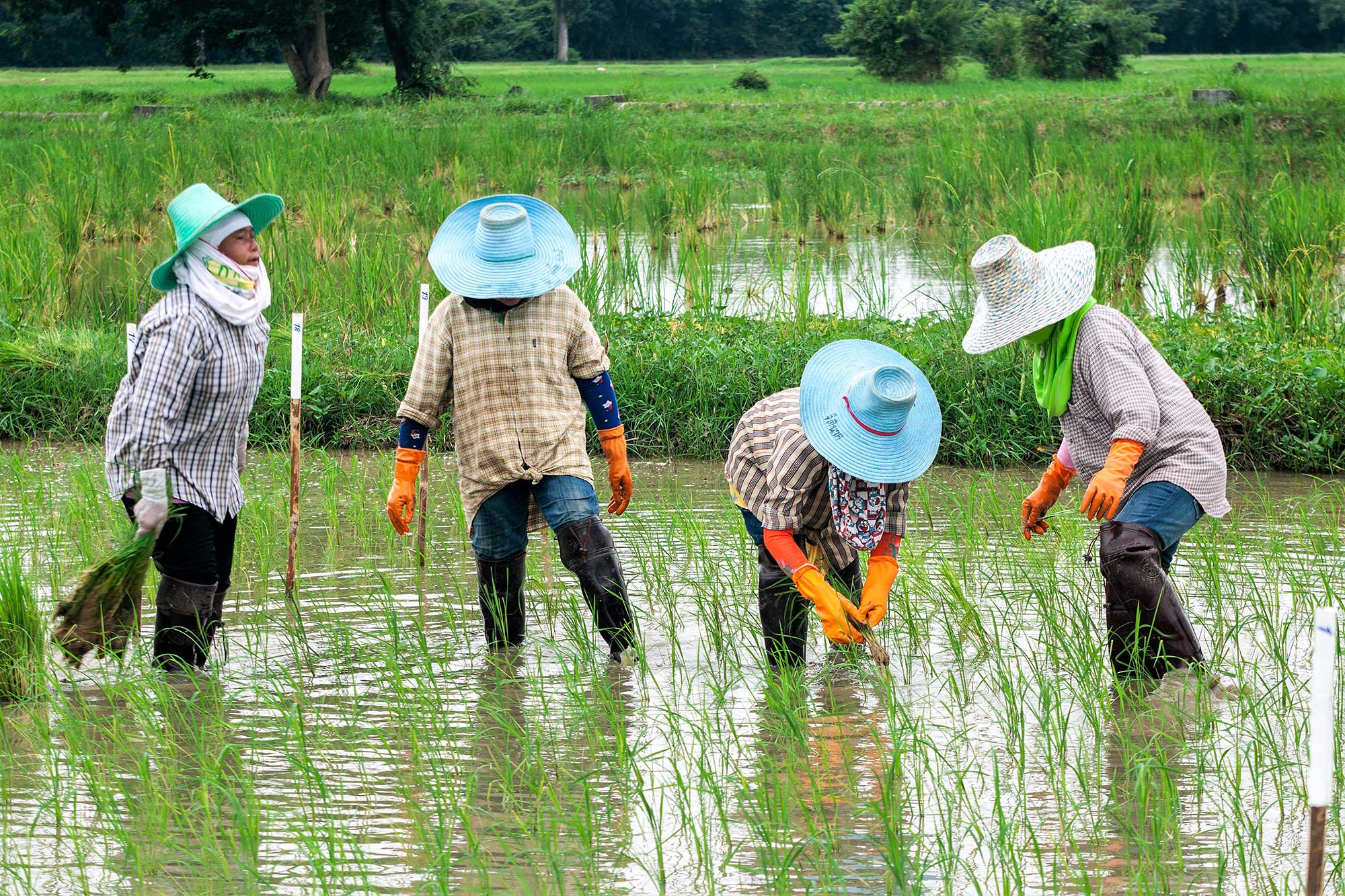
Writer: Paul Nicholson, Vice President of Rice Research and Sustainability at Olam International
Between the record-breaking heatwaves that enveloped northern Europe this summer and the annual UN Climate Convention underway, climate change is increasingly occupying the public consciousness, with many now wanting it prioritised as a top political issue.
So with the debate heating up, our attention naturally turns to the major contributors to global warming. For most of us it’s transport emissions, electricity production, and increasingly livestock that immediately spring to mind, but there’s a lesser known player that should be added to this line-up.
Rice production.
Why? Because the 500 million metric tonnes of this crop that’s produced each year, emits the same level of CO2 equivalent as the whole of Germany. In fact, rice production is one of the leading manmade contributors of methane; a greenhouse gas that’s 34 times more potent than carbon dioxide and is emitted from the rotting vegetation in the water-soaked paddy fields.
This is an uncomfortable reality given that rice is the daily staple for over half of humanity, not to mention the financial backbone it provides for millions of rice-farming families in Asia- the world’s rice bowl. In fact, for these people, ‘rice is life’, as the Thai mantra goes. So entangled is it in the culture that if you walk down a street in Thailand, you will likely be greeted with “Kin khao reu yang” or “Have you eaten rice yet?”, which incidentally, if you respond ‘no’ to, doubles up as accepting an invitation to dinner.
So in this paradox where rice is both crucial to future food security and a crop cultivated in a way that’s contributing to the global climate crisis, we need to tip the balance in favor of people and planet. How? By making rice production sustainable. This means reducing its GHG emissions, but not as a trade-off that hurts the farmers and communities who depend on it for income and sustenance.
Thus, in the lush paddy fields of Thailand’s Ubon Ratchathani, farmers have produced the world’s first fully verified sustainable rice. The journey started in 2015, when global agri-business Olam joined forces with the Thai Rice Department and German Development Agency GIZ, to train farmers to grow rice under the first voluntary sustainable standard for rice- the Sustainable Rice Platform (SRP). Fast forward three years and thanks to the expertise and support of Olam and its partners, 1500 farmers are getting a much better income from higher yields and quality of a crop that carries a lighter environmental footprint.
One such farmer is Kriengkrai Chanpeng from Ubon’s Warin Chamrap district, who after just one month of planting a demo plot using the SRP practices, noticed that the stalks were visibly taller and stronger than those in the adjacent field that he had planted using conventional methods. And sure enough, the combination of simple agronomy practices including land leveling, better inputs, proper soil management and biomass removal, meant that this season, Mr. Chanpeng has reaped a 55% higher yield from his harvest. “I’ll use this extra money to improve my living but also I want to be a role model for the community, so they can follow my lead and enjoy these benefits too”, he beamed.
In the neighboring district of Khok Sawang, farmer leader Mrs. Duangchan Witchalin has just returned from the mill, triumphant having discovered that she’s doubled her profit on this year’s grains compared to last. Benefiting from substantial cost savings and higher yields, she, along with the 30 other farmers in her co-operative, is also convinced of the economic benefits of these simple, but sustainable production methods. And it’s a win for the environment too, with the combination of these climate-smart practices capable of reducing methane emissions by up to 70%.
Olam, with its partners, is aiming to reach 150,000 farmers by 2023 in Asia and Africa, but now that we have a definition for sustainable rice in SRP, we need to catalyse change on a greater scale. This is where retailers hold the power- by using SRP as a procurement standard and engaging with stakeholders like banks and insurers to incentivise farmers, they can increase the demand and in turn, help meet this growing demand for sustainable rice.
Feeding the world and saving the planet have to become mutual goals if we are to meet the demands of a billion extra people by 2030, while keeping global warming below the 1.5°C critical risk threshold. Opening up the market for sustainable rice would be a major step towards achieving this.

